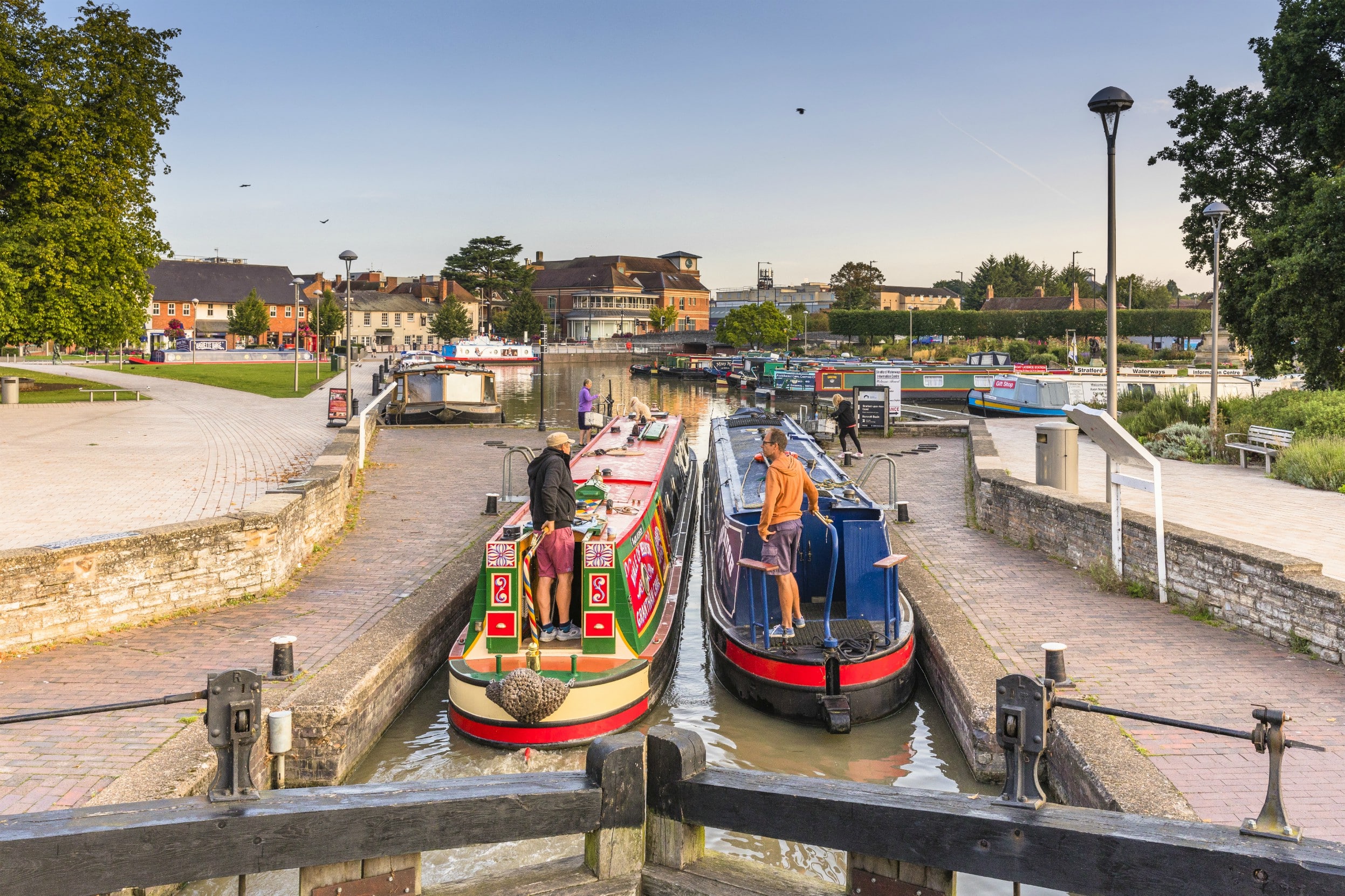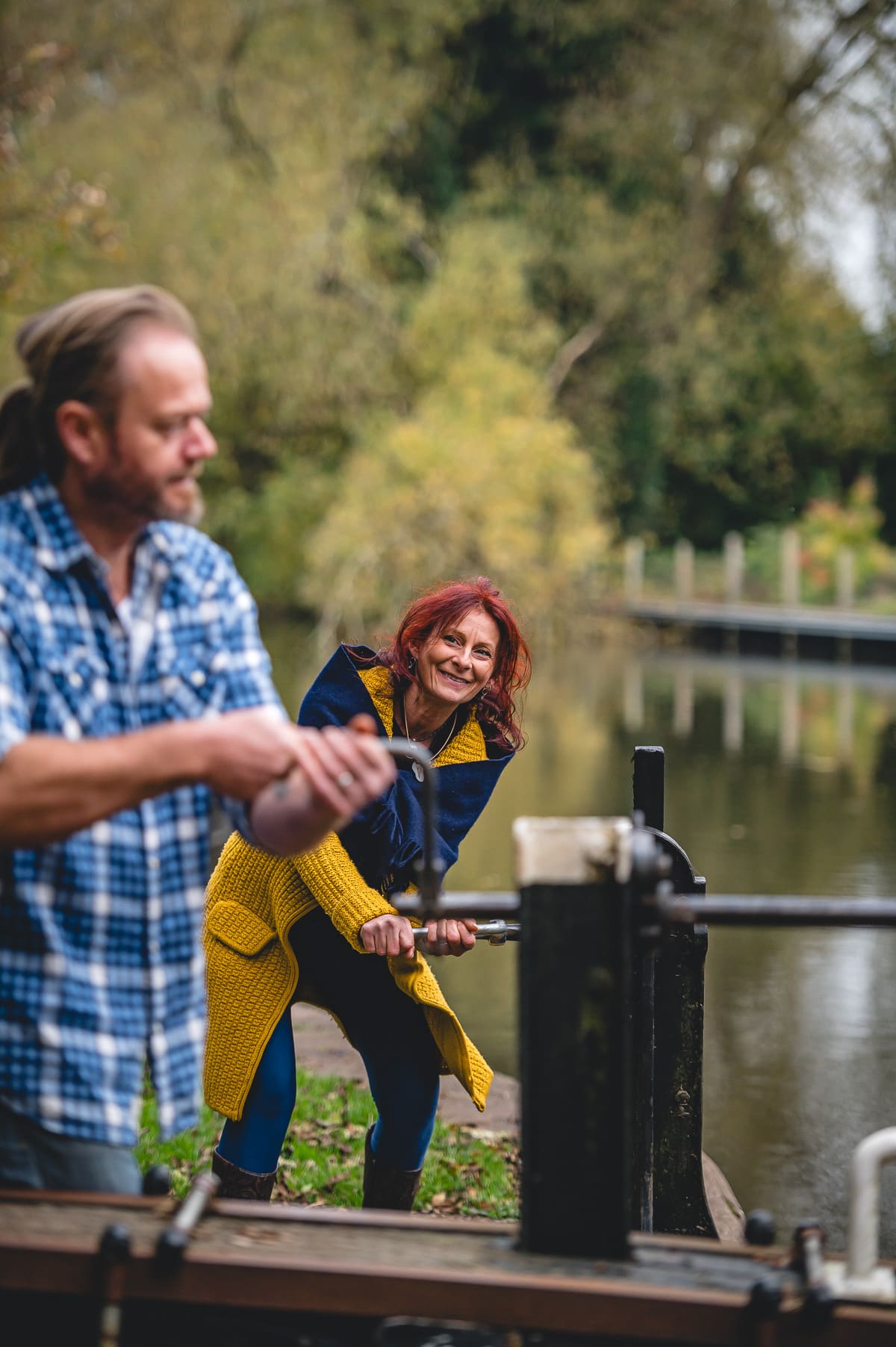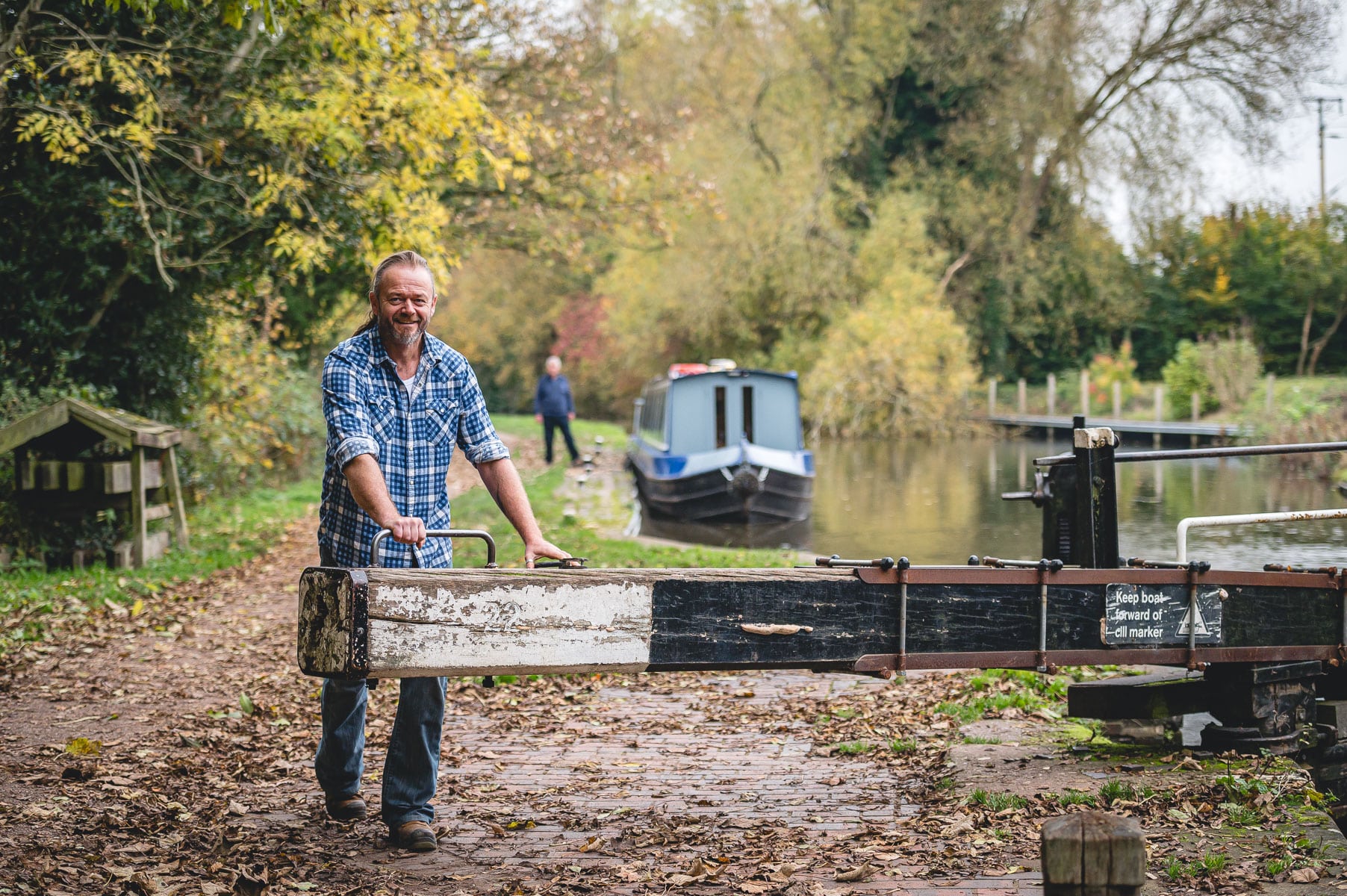We have five star customer reviews on Feefo.
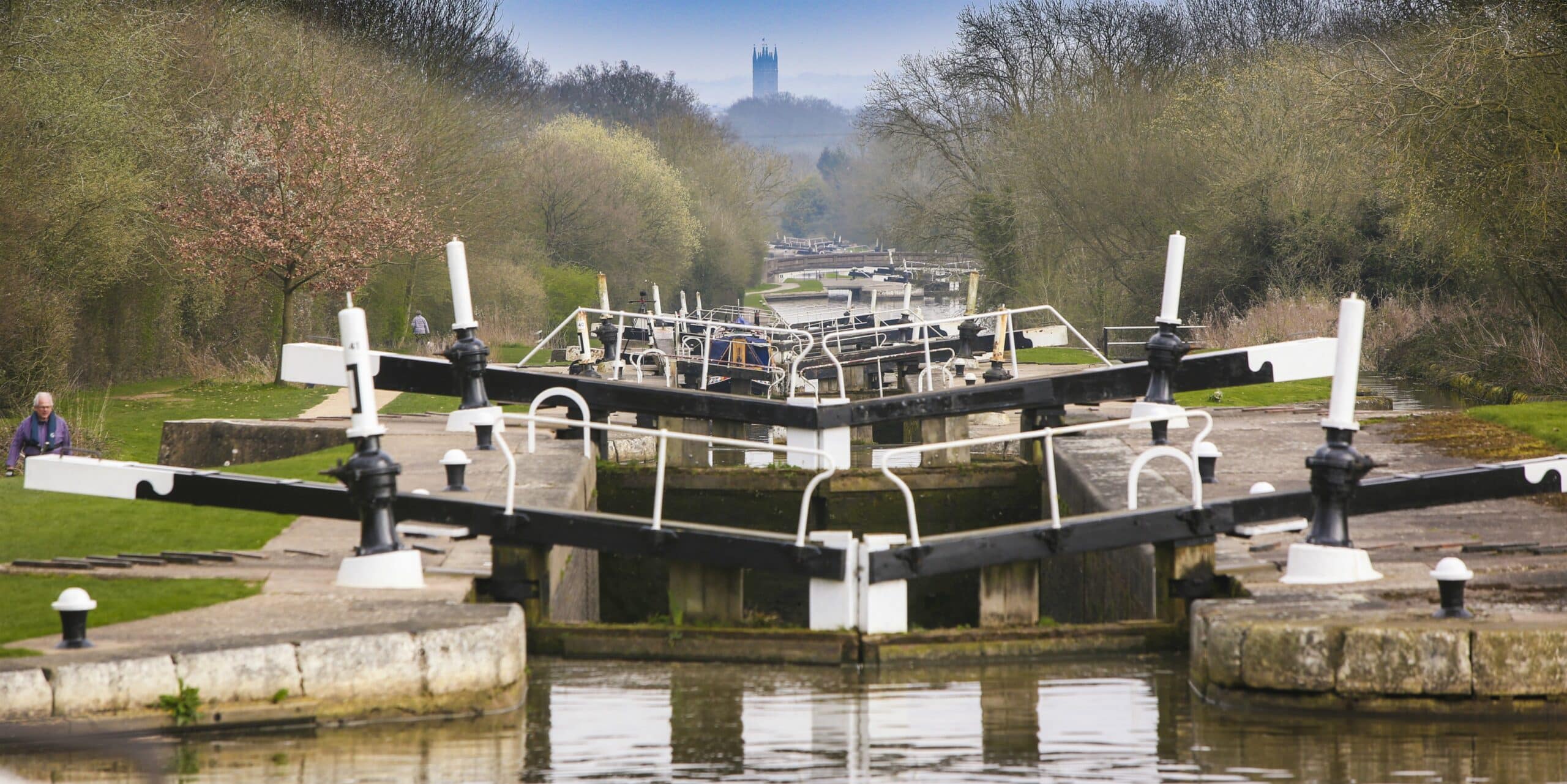
Types of canal locks
We offer a range of boat sizes with accommodation for two to 12 people.
With our Price Promise you’ll know you’re paying the best price.

What is a lock?
Locks help canal boats go up and down hills.
A lock is a chamber with gates at either end. By emptying or filling the chamber with water, boats can move up or down a canal.
Lock gates have doors (called sluices or paddles) to let the water in or out. Canal boaters use a windlass (an L-shaped handle) to open and close the paddles.
When the water level under the boat is the same as the level it’s moving to, the boat can move in or out of the lock.
Typically it takes around 15-20 minutes to go through a lock.

Single or Narrow locks
Single locks (also known as narrow locks) have just one lock gate and are the most straightforward to use. They are designed for a standard 7ft wide narrowboat. You’ll find examples of single locks on the Stratford, Llangollen, Caldon and Oxford canals.
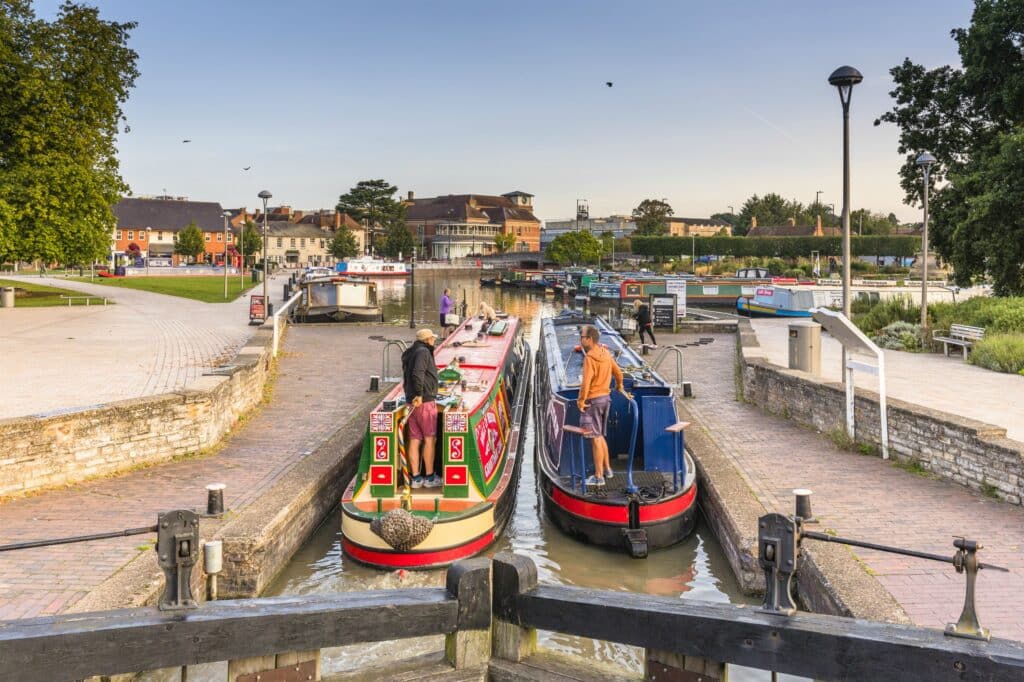
Broad locks
Broad locks are double the width of a single or narrow lock. They allow two narrowboats to go through together, or one widebeam boat on its own. Examples of canals with broad locks include the Kennet & Avon, Grand Union, Trent & Mersey and Leeds & Liverpool canals.
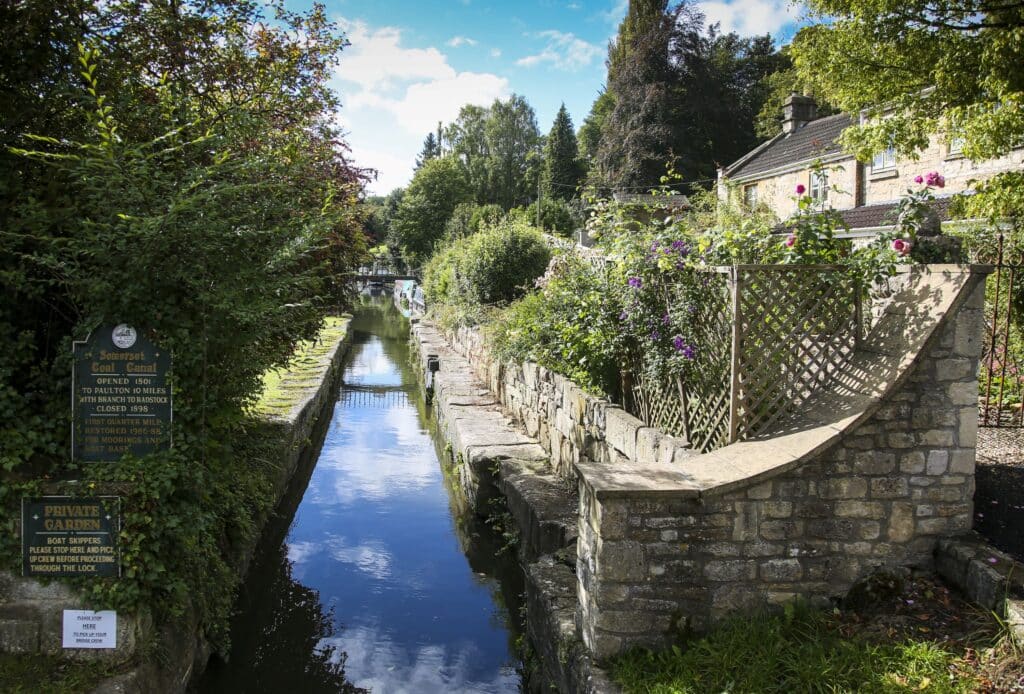
Stop locks
Originally used as a way to control the flow between different canal companies’ water, the stop lock worked to completely break the flow of water. As most canals are now managed by the Canal & River Trust, boats can move freely so most stop locks have been removed. There are stop locks at Kings Norton on the Stratford Canal, the Somerset Coal Canal and Worcester Bar in Birmingham.

Guillotine locks
This type of lock mimics the blade of a guillotine. The gate is raised and lowered letting boats through. There aren’t many guillotine locks on canals, but there are more examples on river navigations. There’s a guillotine lock on the Rochdale Canal at Todmorden and you can see the remains of the guillotine lock at Kings Norton Stop Lock on the Stratford Canal.
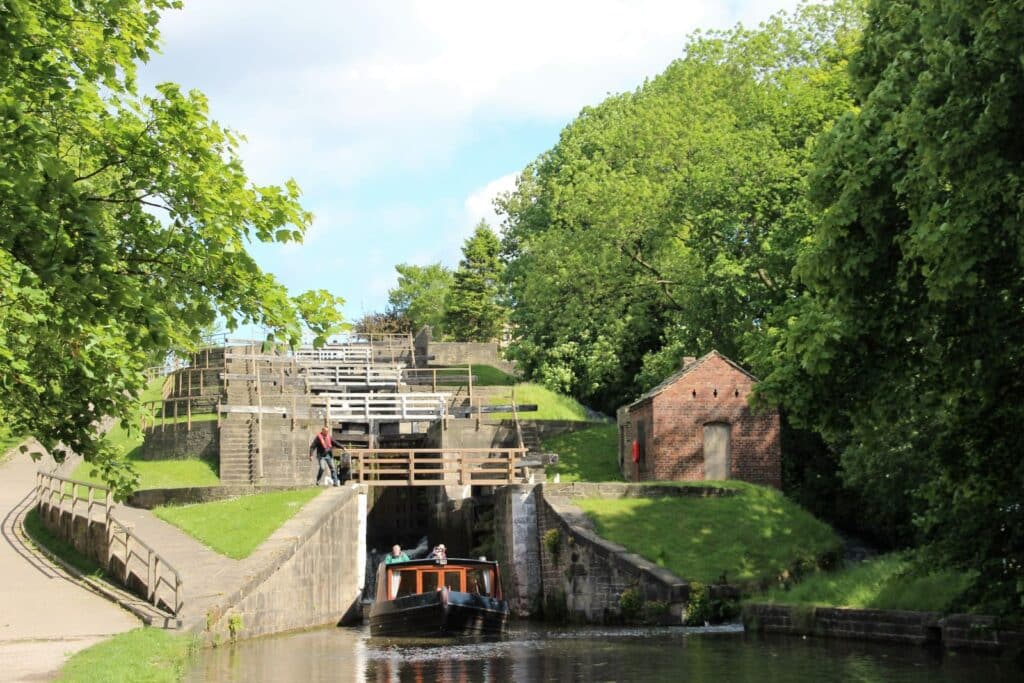
Staircase locks
Created for steep gradients, staircase locks have numerous locks in a row and appear like stairs in the landscape. Staircases don’t have pounds (areas of water) in between each gate. The top gate of one lock will also be the bottom gate of the lock above. Bingley Five Rise locks on the Leeds & Liverpool Canal and Foxton Locks on the Grand Union Canal Leicester line are examples of a staircase lock.
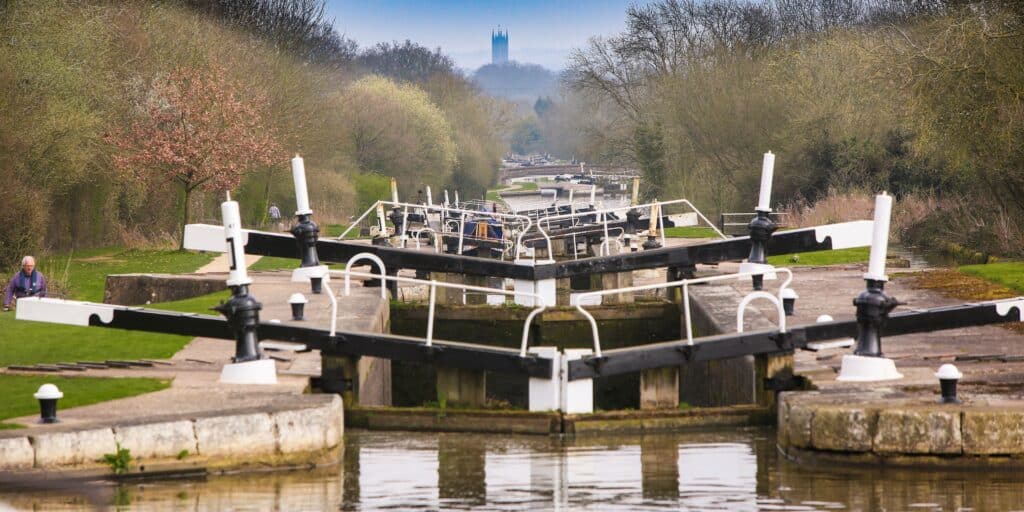
Flights of locks
Lock flights contain pounds of water between locks. The Hatton flight on the Grand Union Canal, the Tardebigge flight on the Worcester & Birmingham Canal and the Caen Hill flight on the Kennet & Avon Canal are examples of a long flights of locks. Some lock flights have staircase locks within them, for example Foxton Locks on the Grand Union Canal Leicester Line.
FAQs
You don’t need a licence to steer a canal boat and we provide tuition as part of our boat rental.
There are plenty of places to moor your canal boat for free along towpaths, making overnight stops flexible and stress-free. If you prefer additional facilities like water, electricity, or secure mooring, some marinas charge a small fee. Our team can provide route advice, including the best mooring spots along your journey.
We recommend packing all weather/waterproof clothing and deck shoes, pumps or sneakers and it’s a good idea to bring slippers, sliders or thick socks to wear on board. We provide towels and bedding. We don’t recommend you bring large suitcases on board our boats, but we can store them for you, if necessary. We’ve published advice on what to pack.
Operating locks is a fun part of the canal boat holiday experience, and it’s easier than you might think. During your handover, we’ll explain how to safely work locks. You’ll quickly get the hang of it, and there’s always help at busy locks if you need it.

